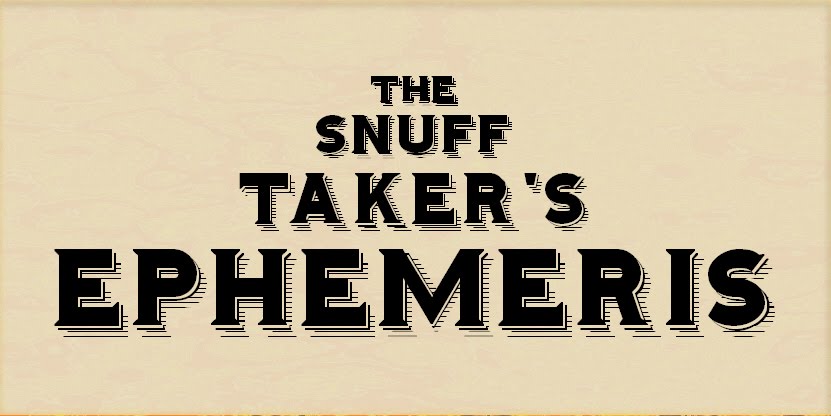OK, a lot of people have been asking me lately what the back cover of Volume One is all about. If you haven't seen it, here it is:
Well, it's a homage to the brand of cigarette that I smoked for many years. If you've ever bought a pack of filterless Camels in the last 97 years, you've noticed the back of the pack contained a "quality warning" explaining why Camels cost more than most cigarettes:
Of course, we know now that this is pure BS on RJR's part (the amount of "Turkish" tobacco in Camels is nearly non-existent, and the domestic tobacco isn't any different from what they put in their filtered blends like Camel and Winston, it's just less adulterated). But, the cigarette companies still want to put some sort of "mystique" behind their non-filter blends, so they justify the higher price by alluding to some sort of "super" tobacco in their premium blends.
In reality, non-filtered cigarettes like Camel, Lucky Strike, Pall Mall, and Chesterfield don't cost any more to make than their filtered counterparts. In fact, most evidence points to them costing much less to manufacture than filtered cigarettes. So why do the companies charge almost double the pack price of the average filtered brand for their non-filters? Simple: because they can.
All cigarette companies have what are known as "over the counter" brands. These are the "old fogey" lines like Benson & Hedges, More, Carlton, Tareyton, and Kent. Brands that have dedicated buyers that have been smoking them for decades, and will absolutely not switch for any reason whatsoever. Most non-filter smokers belong to this group. The cigarette companies know that they have a built-in (albeit small) customer base that will pay a premium price for these brands. They don't have to spend any money advertising these brands, and they make a tidy profit off of them by selling them at above-average prices.
RJR does this with Camel and Lucky Strike. They know that the smokers of these two brands will not be satisfied with any other cigarette. It doesn't matter if they only sell 100,000 cartons a month either, because they're making twice as much profit off them than they are on their leading brands.
For many years, I smoked Lucky Strike non-filters. When RJ Reynolds bought out B&W, they acquired the Lucky brand as well, and decided to change the recipe into something a little more bland (perhaps in an attempt to sway Lucky smokers towards the more established Camels?) Either way, I was not satisfied with the "new" Lucky Strike and I found myself gravitating towards the bolder Camel line. I too bought into the lie that I was now smoking "Turkish" cigarettes with "premium" tobacco.
When I found out the truth, I felt duped. But it made it really easy to quit smoking when I felt that I had been RJR's little propaganda sucker for two decades, and in hindsight, I now question the claims of all tobacco manufacturers when they claim to have "superb" leaf in their product. Very few companies actually pick prime leaf like they did in the thirties and forties. They rely on their labs and their additives to provide all the flavor; which brings me to the use of Recon tobacco in cigarettes.
RJR pioneered the use of Recon in some of their cheaper brands in the late 1940's. Recon is short for reconstituted tobacco. Previously, "floor sweepings" were traditionally ground down into snuff or used in short-fill cigarillos. RJR found a way to press these tiny chunks of tobacco into a new "Frankenstein" sheet and cut it down into cigarette tobacco. (The sheets look kind of like the outer wrapper of a Black and Mild cigar, which is also a recon leaf.)
This saved the company a lot of money, and they were able to mix crap tobacco with better grades and still have a somewhat decent cigarette. At first, this was all done on their cheaper brands, but in time, even their best sellers like Camel and Winston contained some degree of Recon. RJR began losing marketshare to Phillip Morris in the 1960's, when RJR's use of Recon was at an all-time high while PM made very little use of it. Was it because RJR's cigarettes were tasting lousy, while Phillip Morris's were tasting pretty good by comparison? Who knows. But in time, all cigarette companies started to use Recon as a cost-cutting measure.
So I laugh now at the absurdity of the Camel message, especially when RJR alone was responsible for making cigarettes less prestigious than they already were. The whole thing is a copout, really. It's like when a car company says "No fancy GPS or On-Star in our vehicles. We make cars, not entertainment centers." Read that as "We're too cheap to compete with the other guys, so we're going to justify our lack of features by making them seem superfluous in comparison."
So does this mean that the Ephemeris is cheap, or overpriced? Hell no! I just thought it would be nice touch for the back of the book, which was going to remain blank until the last minute, when I came up with the Camel homage.
So, there you go. No, it doesn't mean that we're never going to run specials (hell, our entire first printing was sold at a 10% discount) or have contests or whatnot. Don't read too deep into it- it's just a cover!



No comments:
Post a Comment